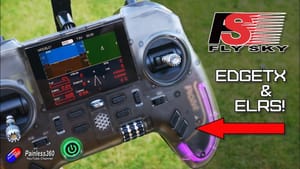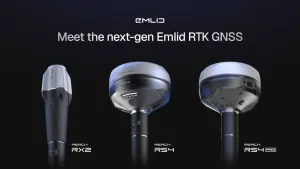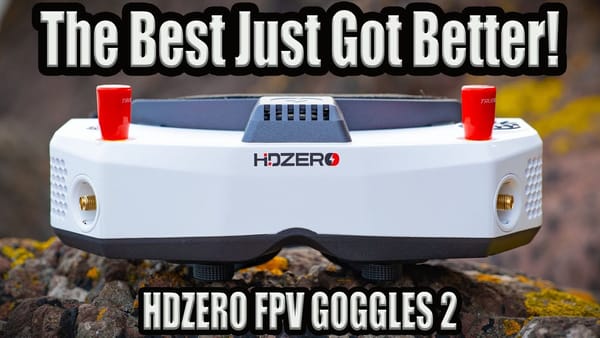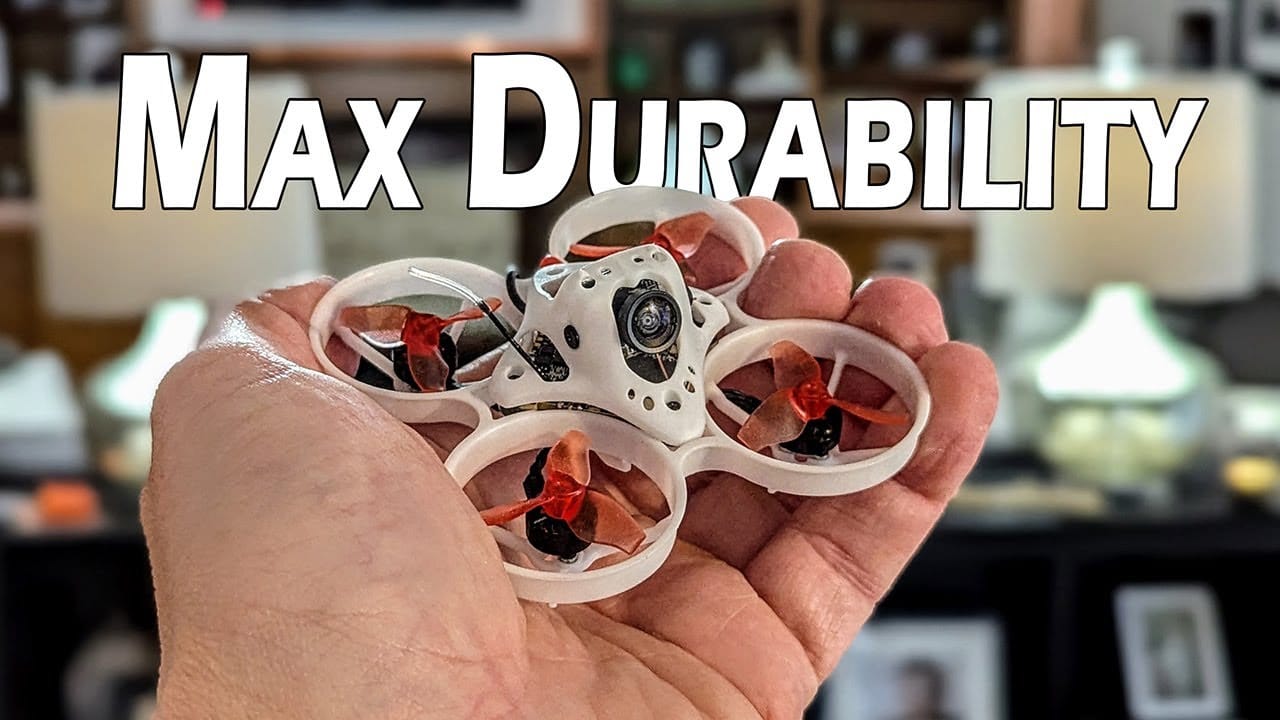
Nick Burns tests the Emax Tinyhawk NanoScout HD. TL;DR: it’s built for beginners, survives squish tests, and runs HDZero with ExpressLRS.
What’s in the box
The RTF kit includes HDZero goggles, a radio, and the NanoScout HD. You can also buy the quad standalone as a BNF.
Accessories include a tiny screwdriver, spare props, rubber band for the battery, extra screws, grommets, and cards for support and warnings.
Hardware and specs
The NanoScout HD uses Emacs EM2.0 battery connector and a micro USB port for the flight controller.
Motors read 0801.5, 22,000 KV in this sample. Props are Emacs Avon 31mm in yellow. Production motors may carry silk screening.
The HDZero all-in-one board bundles a 200mW VTX and ExpressLRS receiver. Antennas are tiny—one for ELRS, one for video.
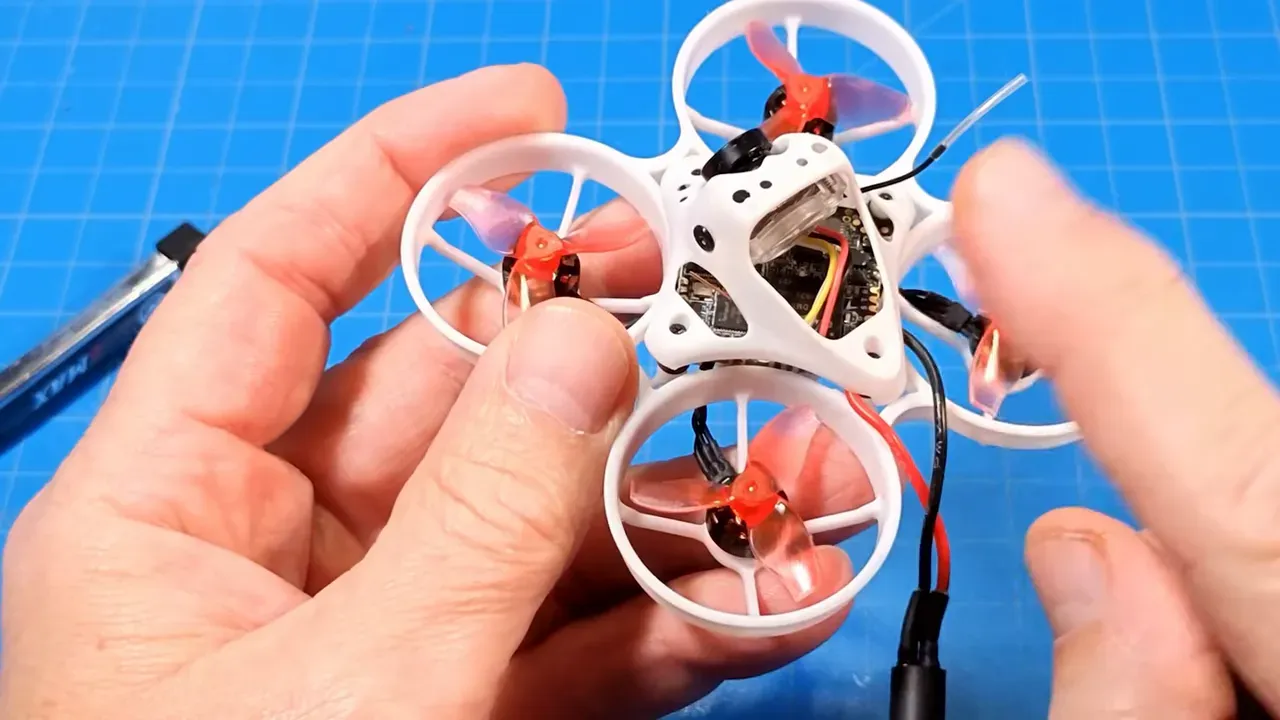
Build, bracket and durability
Emacs calls the frame “robust.” The canopy material shows memory—squish it, and it mostly springs back.
Bracket design improved. Earlier, Nick broke a smaller bracket. This larger bracket survived his flight testing.
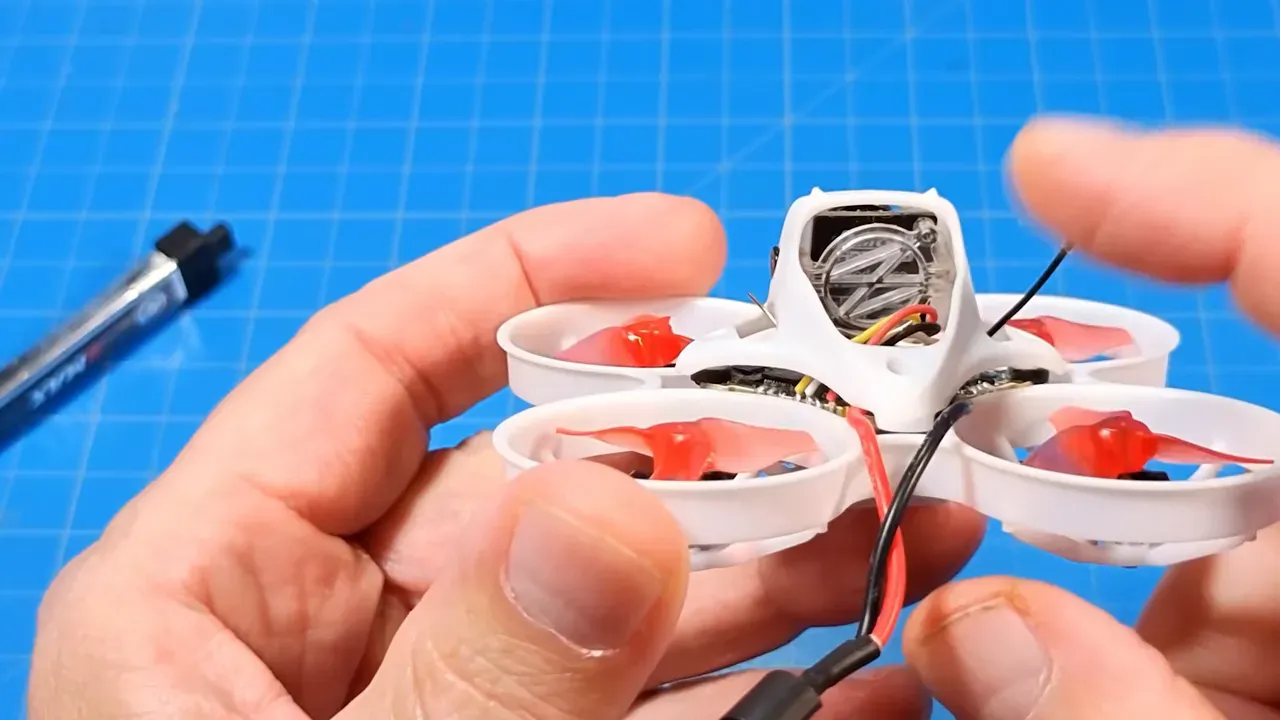
The camera mount is adjustable. Screws can slip in violent crashes, so tighten snug but not savage—over-tightening pulls through plastic.
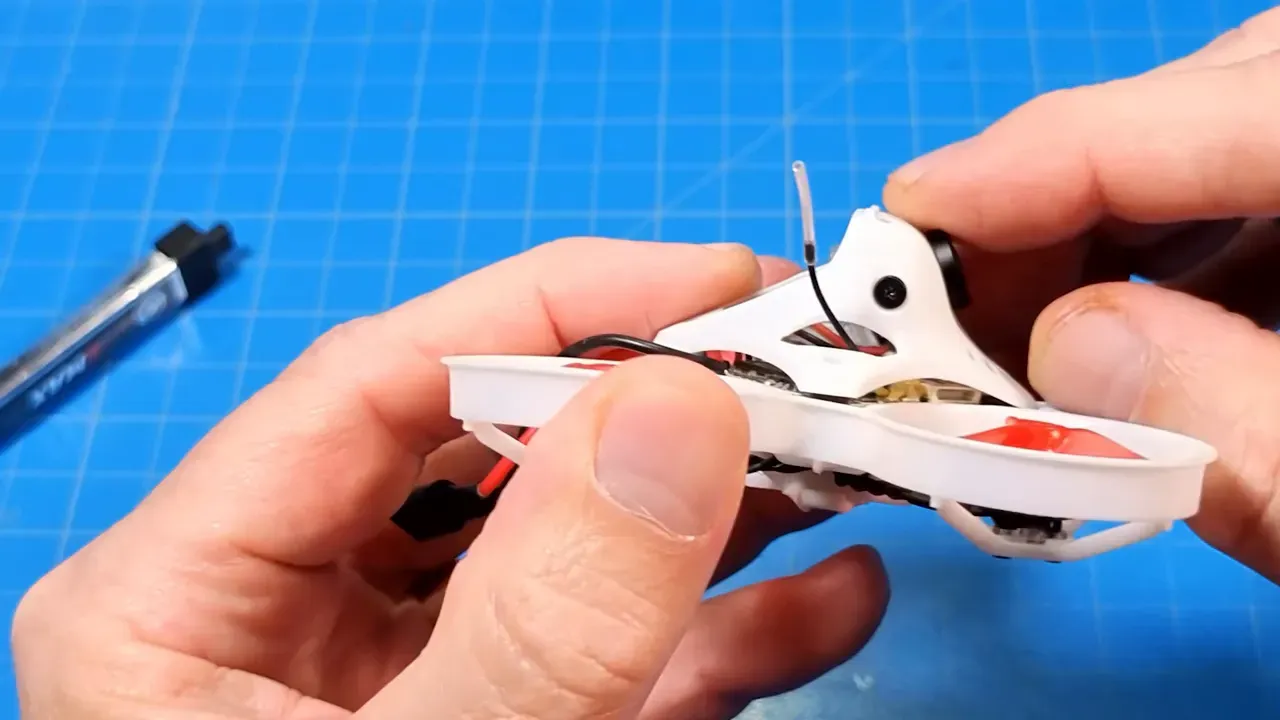
Weight and battery life
Dry weight sits a little over 23.5 grams. With Emacs’s 320 mAh 1S EM2 cell the flying weight rises to about 32.5 grams.
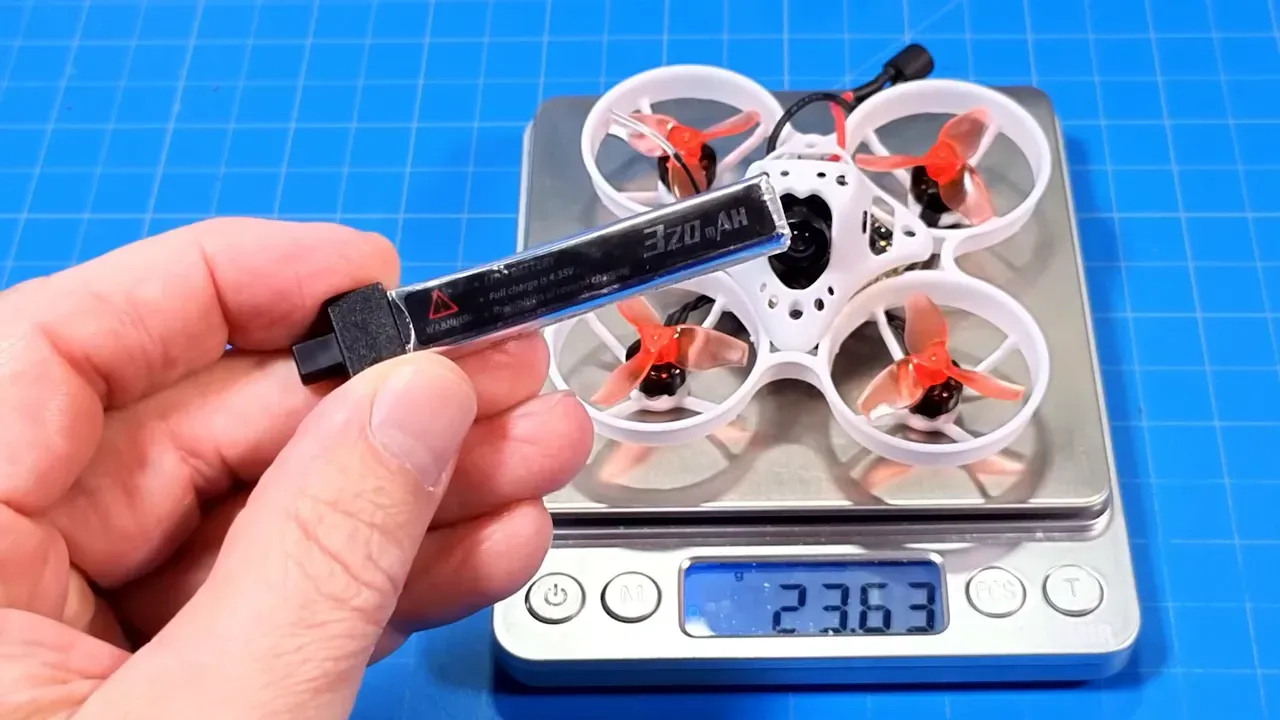
Expect roughly two and a half minutes per flight in Nick’s tests. He lands around 3.5V per cell and disarms near that number.
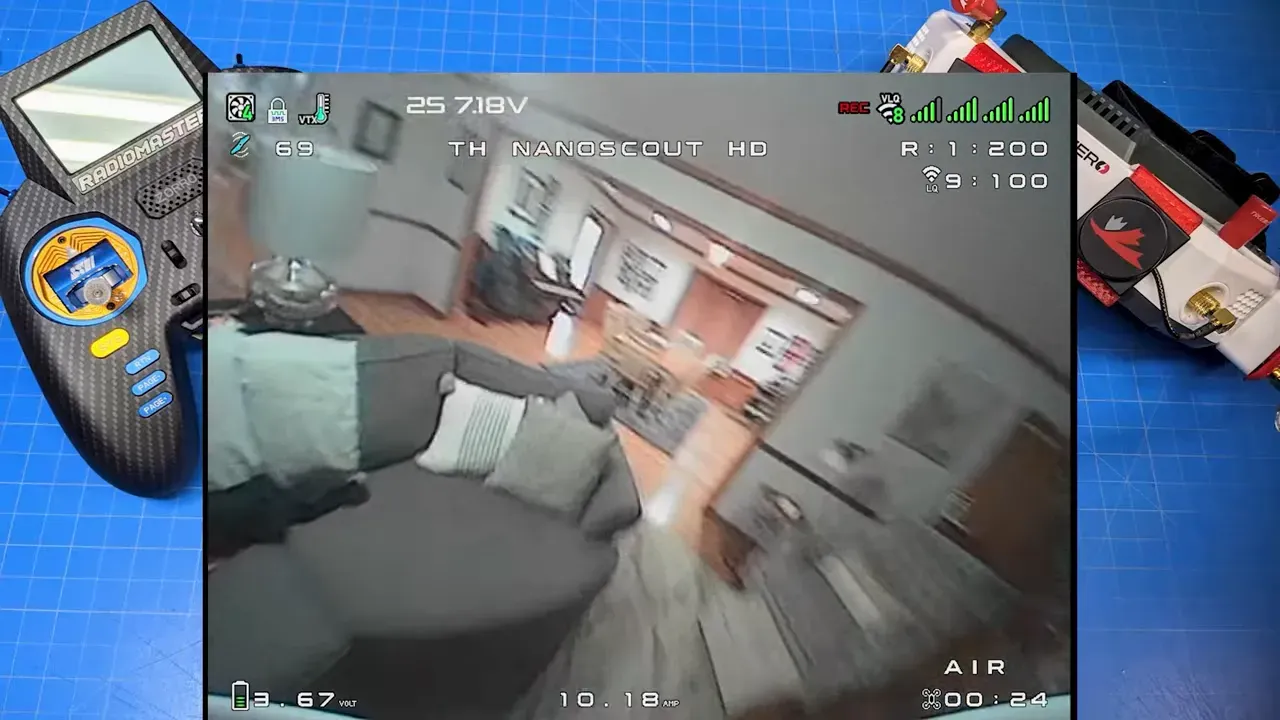
Flight performance — indoor and outside notes
The NanoScout isn’t tuned for top-tier performance. Emacs targets durability and easy use for starters.
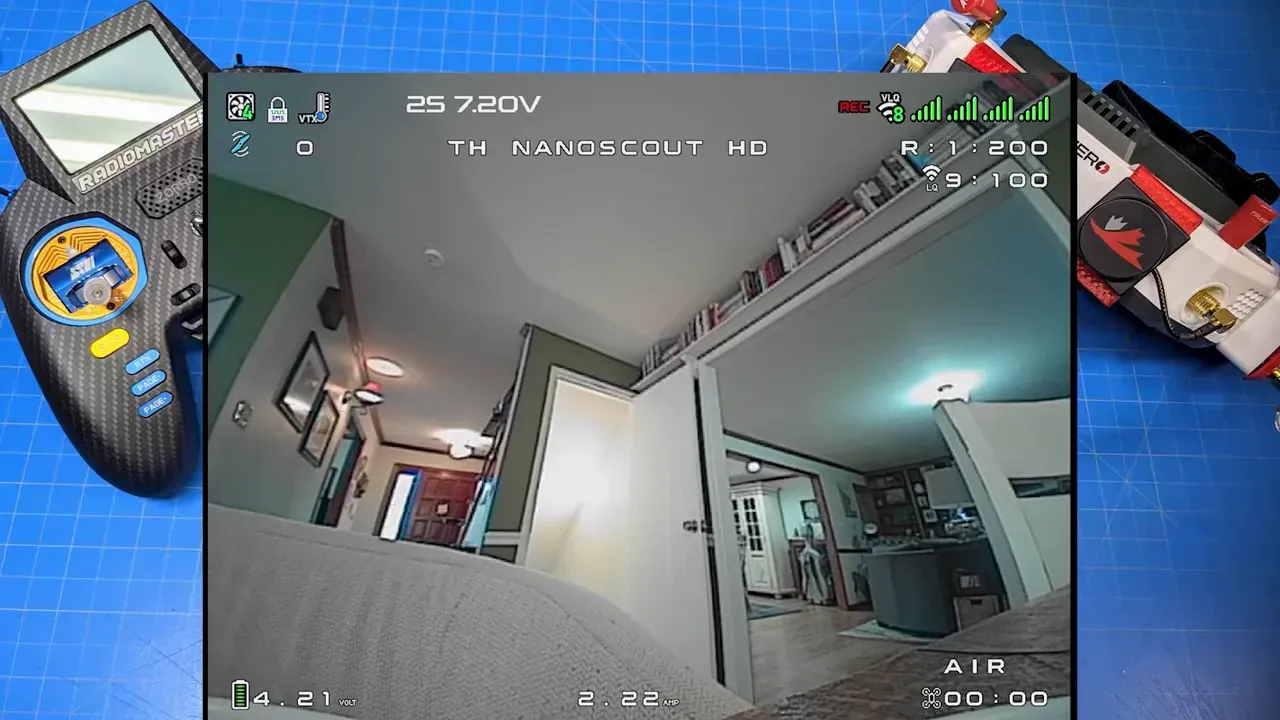
Nick saw punch-out vibrations during outside flights. That suggests filter or PID tuning may need tweaks for aggressive outside flying.
Despite lower weight and modest KV, the little whoop managed punch-outs and a power loop over a small tree. It still feels fun to fly.
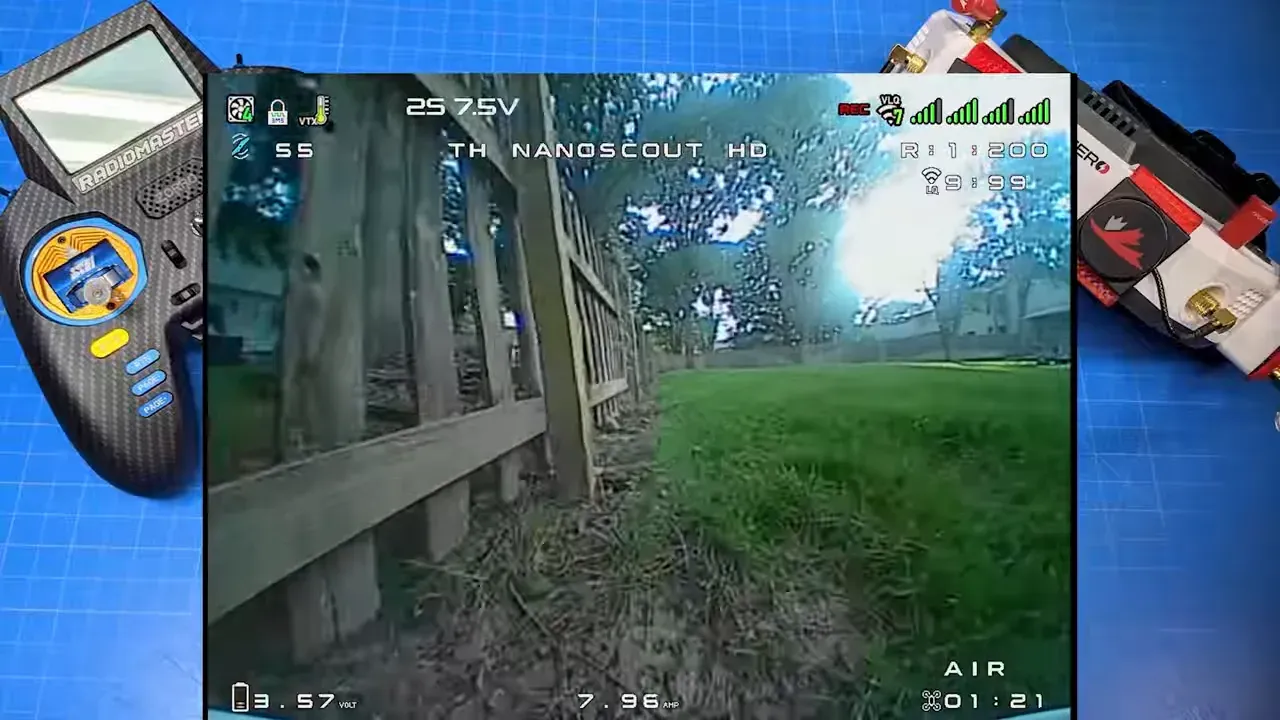
Repairs and maintenance
Motors use plug-and-play connectors. Swap motors without soldering—just unscrew, unplug, and plug in the replacement.
Getting 31mm props on and off tests adult fingers. Nick recommends a prop puller for sanity and speed.
Camera lens remains exposed. Hard frontal hits can break the lens—expect rubber bands or the lens to fail before the frame.
Options, versions and compatibility
Emacs sells the HDZero NanoScout and an analog variant. The goggles differ despite similar looks—HDZero goggles will not receive analog feeds.
Buy BNF if you want to bind to your own radio. Buy RTF if you want Emacs’s goggles and radio packaged together.
Who should buy this?
Buy this if you start FPV, fly indoors often, and want durable hardware with HDZero video and ExpressLRS receiver built-in.
Don’t buy this if you want a featherweight, high-power whoop for competitive racing. This one sacrifices top speed for longevity.
FAQ
Q: Do I need special goggles for the HD version? A: Yes. You need HDZero-compatible goggles to use the HDNanoScout.
Q: Can I use my analog goggles? A: Not with the HD unit. Buy the analog variant if you prefer legacy goggles.
Q: Are motors soldered? A: No. The motors are plug-and-play. You may need to reverse rotation in Betaflight or ESC tools.
Q: How long will batteries last? A: About two and a half minutes in Nick’s testing. He landed near 3.5V per cell.
Q: Will the frame distort during shipping? A: The canopy has memory. It recovers from squishes better than older whoop frames.
Takeaways
- Durable starter whoop: Built to survive indoor crashes—frame flexes, then bounces back.
- HDZero + ExpressLRS: Low-latency HD video and modern receiver in one tiny board.
- Easy repairs: Plug-and-play motors and replaceable rubber bands keep downtime low.
- Not a performance whoop: Lower KV and extra mass limit aggressive outdoor tuning.
This article was based from the video Emax Tinyhawk NanoScout HD // Squish Test for "Material Memory"



